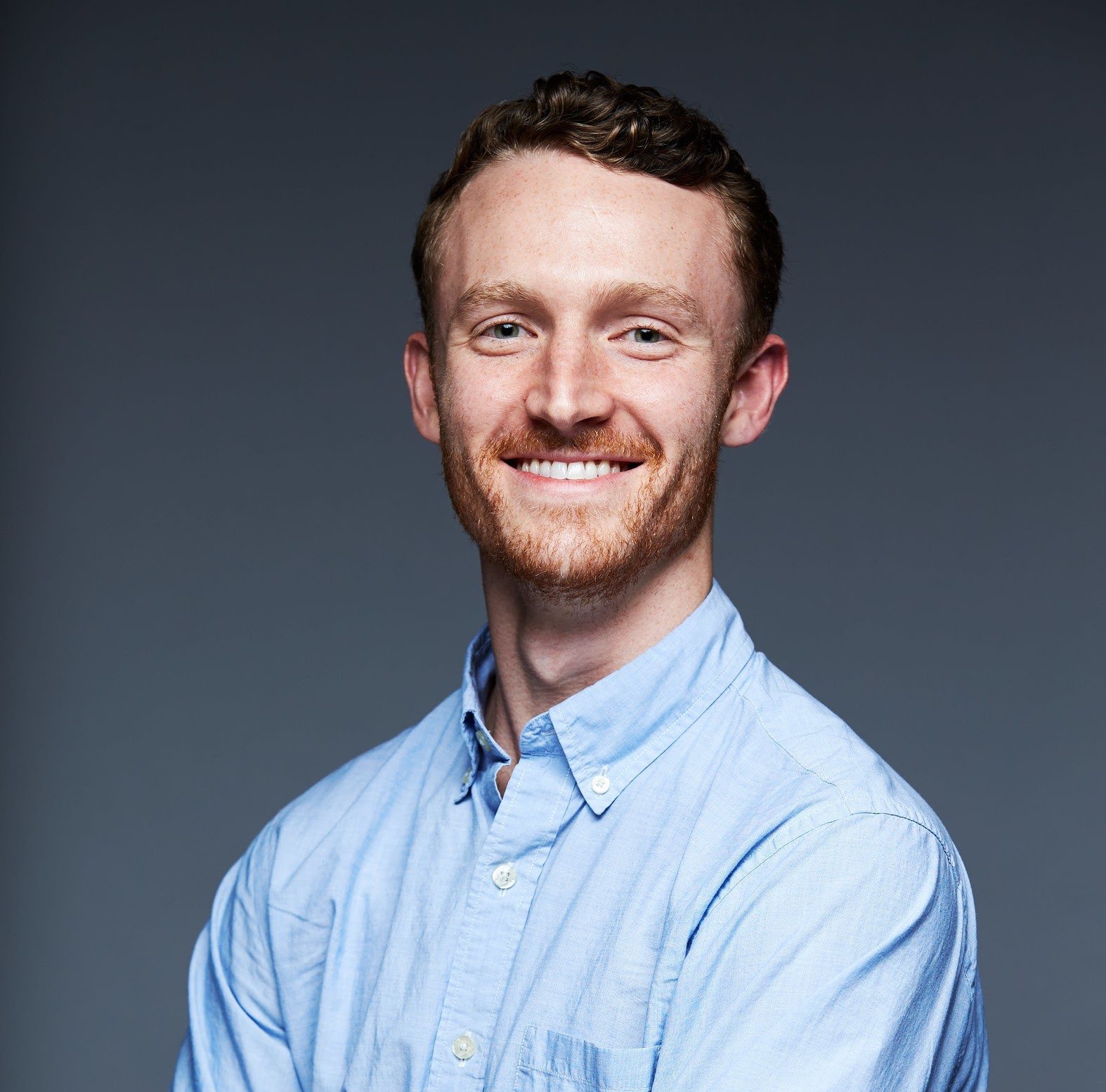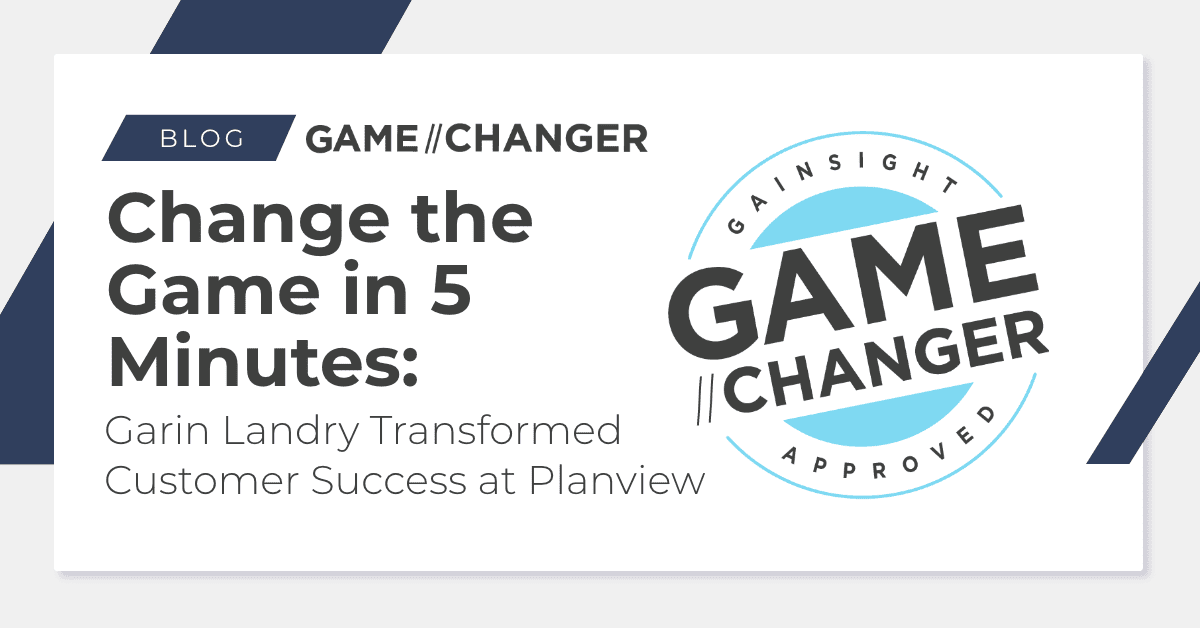
Welcome to Gainsight’s ‘Change the Game in Five Minutes’ series. Our Chief Customer Officer, Ashvin Vaidyanathan, talks to customer success trailblazer Garin Landry in this conversation. Garin is the Insight Strategy Manager for Customer Operations and Strategy at Planview, a global leader in work and resource management (WRM). Planview, a company with a strong track record of acquisition, was acquired by the private equity firm Thoma Bravo in 2017 and has been on an incredible journey since then.
Read on and find out Garin’s “what, why’s, and hows” of customer success at Planview.
Ashvin: Hello, Garin! Let’s kick things off with an icebreaker. If you could time travel, what period would you visit?
Garin: I was recently speaking with my dad about how my wife and I are both workaholics. We typically run a thousand miles an hour. However, with the downturn, we’ve both slowed down, which is a good thing. My dad said, “Right now, everyone is out on bikes, families are hanging out together, and people move slower. It’s just like the 1960s.” So, I think I‘ll choose the 60s!
Ashvin: I’m glad to hear that you’re finding some good in a difficult situation. Now, please tell us the background of your customer success journey at Planview.
Garin: I started at Planview on the finance team as a finance and business operations analyst. After two years, I moved into sales operations, which focussed significantly on renewals. While working closely with Shlok Vaidya, Director of Customer Operations and Strategy, we saw the opportunity to scale customer success. Our brainstorming led to building out an operations and strategy team. It was in my role as a project manager on the implementation side that I became familiar with Gainsight.
Using my finance background, I built different ROI models for our board to understand and justify customer success expenditures. This explanation was especially critical in growing and supporting all our CS team members—from the Chief Customer Officer Mark Cannon to every CSM.
Today, our team consists of about 34 people who manage a $210 million book of business. We use data and analytics to drive processes, strategies, and highlight opportunity areas at both the board and management levels.
Ashvin: Thinking back to two years ago, Garin, what specifically made you and Shlok want to change the CS game at Planview?
Garin: Planview’s product offerings grew from one to six different product lines in just as many years. All of them came to us through acquisition. We found that we needed a new way to assist an entirely different and larger customer base. Serving a varied client base became especially critical after Thoma acquired us. Thoma has rigorous performance guidelines for its portfolio companies. Performing at our then-current renewal rate wasn’t going to work in their model. Once we all agreed on the right metric for renewal measurement, our organization’s focus was a KPI that showed continued improvement.
Ashvin: That makes sense. What operational changes did you make to achieve that goal?
Garin: It began with a complete change of mindset. Our CEO, Greg Gilmore, spoke of bookings and retention in the past, but there was limited follow-through. So, Shlok and I sat down with him and said, “Look, we can talk about customer success all day, but we’re not going to see real improvement until there is a change across the board.”
Our CCO, Marc, wanted to increase recurring revenues by improving our renewal rates. We convinced him to film a video that introduced Gainsight to our decision-makers. It perfectly explained how Gainsight would enable Planview to drive customer success and accomplish our renewal and expansion goals.
Next, we built an internal page that contained all our Gainsight documentation and placed the video at the top. We then emailed it to every person in the organization. We wanted everyone to know, “Hey, it’s not just us in a box over here talking about CS. Our CEO says this is a part of our DNA that must change.” That executive sponsorship was our big boom moment!
Ashvin: I love it! For the next steps, what processes did you put in place?
Garin: To be honest, we were blind when it came to determining a renewal strategy. So, we created a handful of customer journey maps. They were product journey maps that we created on the back of a napkin. There was also one extract in Excel for collecting usage data from one of our product lines. We knew we needed to get a proactive view of the indicators for our lagging renewal rate.
We began with those two artifacts and continued to refine them by considering which features were sticky versus less sticky. In product management, something cool or flashy doesn’t necessarily drive to sticky or adoption renewal. At the minimum, we had to have a login rate and a license utilization rate for each product.
Ashvin: Tell me, Garin, how did Gainsight help you change the game?
Garin: Gainsight came to us through one of our acquisitions. It had immediate value for us. We were instantly using all the different tools, and it solved a central pain point.
One of our biggest complaints, especially for people in the field, was there were too many places to look for data. We needed to create a centralized self-serve location so that everyone could access that data.
Here’s an example of how Gainsight worked for us. Once a month, I sent an email to 200 people to share usage extracts in Excel. The problem was, not everyone opened the files. By the time they did, the data was stale. In Gainsight, you can search for the customer name right from the Salesforce app. Boom! All the information is right there. There’s a value-added efficiency in the time it has saved our teams.
Ashvin: It’s fantastic to hear that getting a 360-view of data is adding to your efficiency. Are there other features you find particularly helpful?
Garin: There is a long list. I must mention Timeline. Before Gainsight, we were storing customer notes in a non-centralized way. We used OneNote, emails, note pads on people’s desktops, Salesforce Chatter. Everyone did it differently, which created operational inefficiency. Gainsight’s Timeline was crucial in storing everything in one place so everyone can access the latest updates and feel prepared.
Relationships is a powerful tool for us, too. With our multiple acquisitions and product lines, we needed a more in-depth look at our customer’s health. Each of our product lines had individual health scores that were aggregated into an overall health score.
In Relationships, we were able to “peel” a level down, which provided enormous value.
Ashvin: How do you measure the actual value of your CS implementations?
Garin: Renewal rates are the first thing we want to measure. We just started tracking this at the top of 2020. So we haven’t seen a turnaround yet. Previously, we could never forecast renewal rates more than a quarter out. That impacts downstream revenue. However, we can look forward to two quarters with our new visibility and plan a more realistic revenue forecast. And in the next couple of months, we may even start forecasting three quarters out.
We use the reporting tools and dashboard heavily, as well. We capture high and lower value activities like closing CTAs, Timeline notes, creating success plans, or saving them. The goal is to feel confident that renewal rates will increase toward the end of the year.
Anecdotally, we’re receiving positive feedback from the end-users. In one case, a CSM was in regular contact with a significant customer and thought their relationship was healthy. After a Gainsight usage-data training, the CSM realized the customer wasn’t using our product at optimal levels. This insight immediately changed subsequent conversations with the customer. The story ends with a successful renewal that might not have happened without Gainsight. Thanks to all of you for creating an excellent tool and making our job a lot easier.
Ashvin: Garin, that’s the perfect quote for us to end with. Thank you for sharing your GameChanger insights today!

